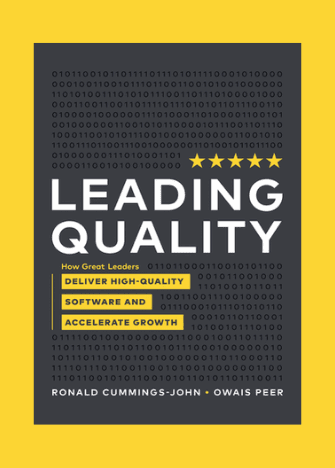Gustavo is a Materials Science and Engineering graduate from Brazil, who wants to keep up to date about tech devices and accumulate experience in different knowledge areas through testing. He is a skilled content creator and he just become one of Teste Work’s ambassadors. You can learn more from him via other articles on the blog and the TikTok videos he made for the Tester Work channel.
One of the most challenging things, when I started testing, was understanding how to proceed during the test case I was assigned while trying to find some bugs. This is a tough quest for beginners, I’m not gonna lie. As the test cases passed and after filling several bug reports, participating in a usability test became natural. I started to develop my strategies to be a more productive tester – I shared some of those strategies here on the blog previously, both for testing on a PC and testing on a mobile device.
You’ll indeed develop your own strategies after a couple of tests. But there is something even deeper than processes and tips to be more productive, which are the good habits of a tester or, defining it with better terms, the soft skills of a good tester.
Developing soft skills is something that can help you through your life as a whole. It is a virtuous circle: your soft skills can help you to become a better tester, while testing can help you build new soft skills and improve the ones you already had.
In this post, we will discuss some of the soft skills that I consider the most important for a high-tier and productive tester.
Critical and analytical thinking
It’s obvious that a tester must be able to identify a tiny issue in a vast application. That demands critical thinking, the competence of looking at something and saying: “Oh oh, that should not behave like this, it should work in a whole different way!“. It is not enough to be able to think critically if you are not able to isolate the real issue and describe how you can go through it. That implies analytical thinking, and those ways of thinking complement each other.
Let’s use an example. Assume that you are testing a mobile application and the registration flow doesn’t work as fluidly as you expected. After a couple of minutes, you notice you are frequently blocked in the login section, and then you assume there is something to be improved here. That’s critical thinking, however, it’s not enough to fill a report. After investigating the login section thoroughly, you notice that the application requires a strong password with different types of characters, without having any feature to show the user what he is actually typing. Therefore, users are more prone to commit typos when creating a new password and not being able to correct it on the spot, which requires the app to block the flow and redirect the user to type the whole string again. That’s analytical thinking. And now, with both ways of thinking working together, you can suggest an improvement for the login section of the application.
Problem-solving orientation
Critical/analytical thinking can help you to find anything that doesn’t work properly. However, you need to focus on problem-solving to be able to describe what was the expected outcome if the feature in question worked properly. Being problem-solving-oriented will also help you come up with high-quality insights and feedback.
But there is another benefit of being problem-solving-oriented. When you write your reports considering how the issues will be solved you are directly connecting with the moderators and developers, who are the most responsible for proposing and implementing solutions for the tested application. This way, the chances of having your report rejected decrease dramatically. Even if you do not know technically how to solve the issue, being able to point the right direction toward a simple – but effective – solution is always desirable.
Time management
Nothing bothered me more than finally finding a bug after hours of testing, writing the most beautiful and epic bug report, hitting submit, and then being informed by the moderators that a fellow tester already submitted that very same bug a couple of minutes before me. If you also felt heartbroken after getting a duplicate, a little thought might have crossed your mind: “what if I was faster?”
Those who test as a side job, like me, might not be able to take the first seats, and that’s true. But even so, testing a couple of hours after the test cycle started gave me some advantages. Sometimes, I was able to predict what sections were more likely to have bugs, just by looking at the reports that were already accepted and rejected. Also, this can always be used to think of new ways to improve the app, and therefore to submit insights and suggestions.
All profiles of testers are important: those who can start as soon as the test cycle starts and those who will always fight minute by minute against the deadline. The crucial thing about time management is to be able to finish it on time. Read the whole TC invitation before starting testing, and try to estimate how much time it will take to carry out the testing on each segment of the test case. Do not forget to add extra time to fill the reports, add and edit the attachments, and solve any unexpected issues.
Creativity
We live in a time when we need to deal with a tremendous flux of information. Sometimes we can even feel overwhelmed and think that everything possible is already done, and all the more functional features are already implemented and consolidated. I feel that sometimes too. I remember taking part in some test cycles where I only looked at the app, unable to find anything that could lead to an improvement of the app that I was testing. Creativity is the ability to see other possibilities by breaking our usual flow of thinking. Instead of being crushed by the enormous amount of information that we are submitted every day, the creative person can use this amount of information in her favor.
Additionally, when you are already used to changing the way you think, it’s easier to see the app from a different point of view. In other words, being creative can help you understand how the developers see the app, or even if your insights are easy to implement. And talking about communication, let’s move forward to our last (but not least) item from this list.
Clarity and assertiveness
Filling reports is the kind of task you just can not avoid during testing. From test case documents to bug reports, you will always need to provide information on the steps you took and the response that the application returned. There are several posts here on the blog addressing how to write excellent – or even better, legendary – bug reports and how to avoid getting a bug report rejected. The truth is that, when we are talking about any type of report, it all comes down to a single theme: communication. You must be able to communicate effectively with the test cycle moderators. If you can’t transmit your ideas to them, your bug report will, unfortunately, go to waste…
We can summarize the communication skills of a good tester in two words: clarity and assertiveness. First, clarity is a MUST when you are filling in reports and giving feedback. The test cycle moderators shall be able to comprehend the issue that you are addressing and replicate the issue based on your report. If you are giving more broad feedback or giving a suggestion, you need to explain your idea and correlate it with the current features of the application. Being clear means that you need to explain your thoughts and the steps that you went through understandably.
But clarity is not enough if you run in circles. You must be assertive. Being assertive does not mean that you won’t change your position if confronted by someone, but that you must go straight to the heart of the matter. If you are describing a bug, describe it avoiding any unnecessary information or uncorrelated issues. When listing the steps to reproduce a bug, for example, use as many steps as needed to be clear, but as few steps as possible to be assertive.
Of course, language can always be a barrier for non-native English speakers. If that’s the case, a truly precious piece of advice is to use Grammarly to look for typos and grammar mistakes. Also, try to use simple terms, especially from the same vocabulary the moderators use in the Test Case Document. This is better addressed in my first blog post, Tester Work: a must-read guide on best practices, I highly recommend you check it out later!
***
After reading about those five soft skills, I invite you to read the testimonies of our fellow testers here on the Tester Work blog. Learning with the help of others is always a good opportunity to improve your skills!
Happy testing, you all!







